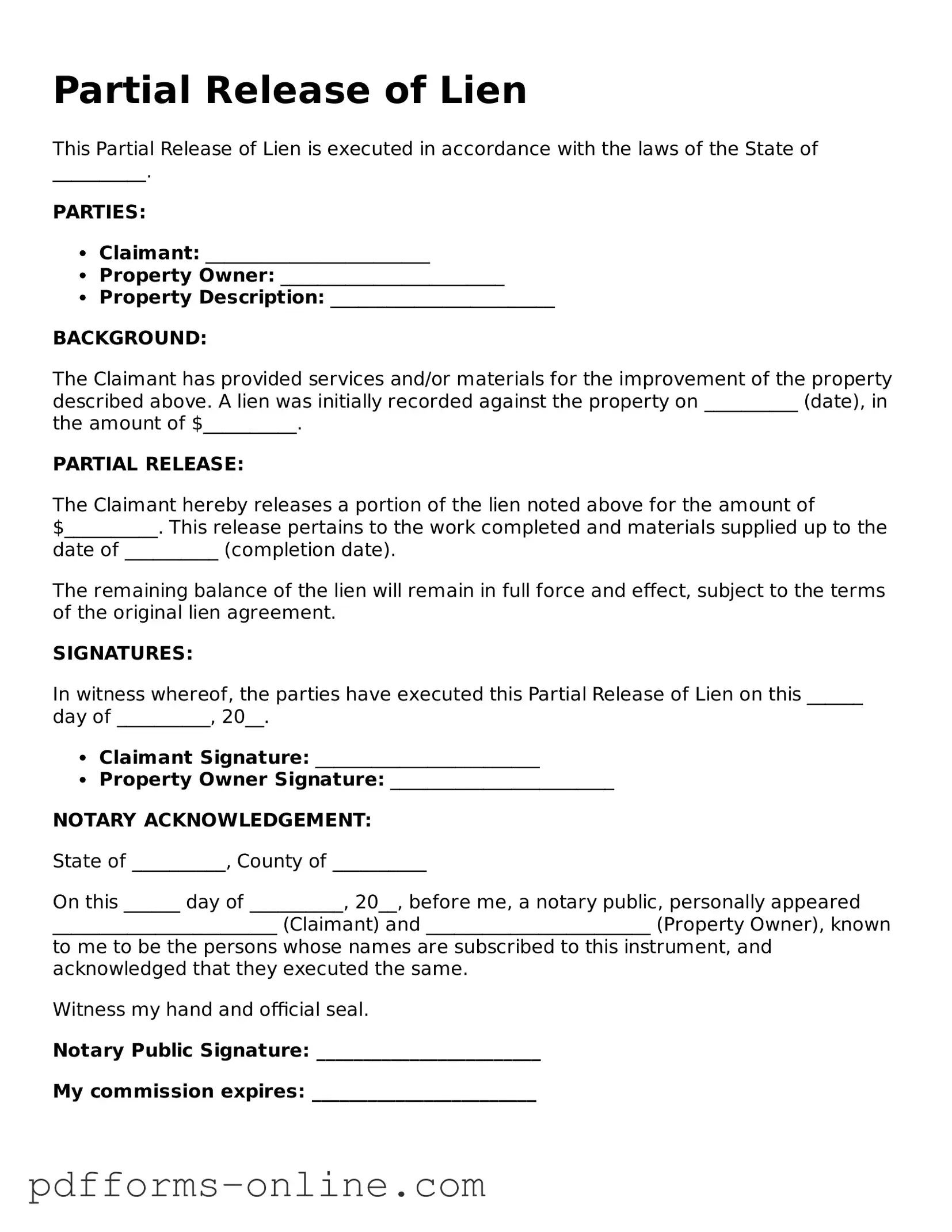The Partial Release of Lien form is similar to a Mechanic's Lien Waiver. Both documents serve to release a party from claims against a property. A Mechanic's Lien Waiver is often used by contractors and subcontractors to confirm that they have been paid for their work. When a contractor signs this waiver, they relinquish their right to file a lien for the amount specified, ensuring that the property owner has clear title to the property without the threat of future claims for that payment.
Another document akin to the Partial Release of Lien is the Satisfaction of Mortgage. This form indicates that a mortgage has been fully paid off. Once the mortgage is satisfied, the lender releases their claim on the property, similar to how a Partial Release of Lien removes a claim for specific work done. Both documents are crucial for ensuring that the property is free from encumbrances, allowing for smoother transactions in the future.
Understanding the various documents related to real estate can be crucial for ensuring clarity and preventing disputes. For example, the California Release of Liability form outlines the responsibilities of participants during activities and can protect against potential claims. A reliable source for accessing such important documents is My PDF Forms, which provides easy access to various legal forms, helping users navigate their obligations and rights effectively.
The Subordination Agreement is also comparable to the Partial Release of Lien. This document allows a lower-priority lien to take precedence over a higher-priority one. In essence, it alters the order of claims against a property. Like a Partial Release of Lien, a Subordination Agreement modifies the rights of parties involved, ensuring that all parties understand their positions in the hierarchy of claims.
A Release of Claim form shares similarities with the Partial Release of Lien. This document is used when one party agrees to relinquish their right to pursue a claim against another party. In both cases, the purpose is to clarify that certain rights have been waived, preventing future disputes. This helps in establishing a clear understanding between the involved parties, fostering a cooperative relationship.
The Assignment of Lien is another document that resembles the Partial Release of Lien. This form allows a lien holder to transfer their lien rights to another party. While a Partial Release of Lien removes a claim, an Assignment of Lien changes the claimant. Both documents are important for managing lien rights and ensuring that all parties are aware of their obligations and rights concerning the property.
The Quitclaim Deed is also similar to the Partial Release of Lien. This document transfers ownership interest in a property without guaranteeing that the title is clear. While a Partial Release of Lien removes a specific claim, a Quitclaim Deed relinquishes any ownership interest. Both documents can be used to clarify property rights and ensure that all claims are appropriately managed.
The Estoppel Certificate has a connection to the Partial Release of Lien as well. This document is used to confirm the status of a lease or mortgage. It prevents a party from denying the truth of the statements made in the certificate. In a similar vein, a Partial Release of Lien confirms that a specific claim has been resolved, providing assurance to the property owner and any future buyers about the status of claims against the property.
The Notice of Completion is another document that bears resemblance to the Partial Release of Lien. This form notifies relevant parties that construction has been completed. Once this notice is filed, it can trigger the start of the lien period for subcontractors and suppliers. Like a Partial Release of Lien, it plays a role in clarifying the status of a project and the rights of those who contributed to it.
Lastly, the Affidavit of Payment is similar to the Partial Release of Lien in that it serves to confirm that all payments have been made for a particular project. This document can be used to assure property owners and lenders that there are no outstanding debts related to the work done. Both documents help in establishing trust and transparency in financial transactions related to property.
